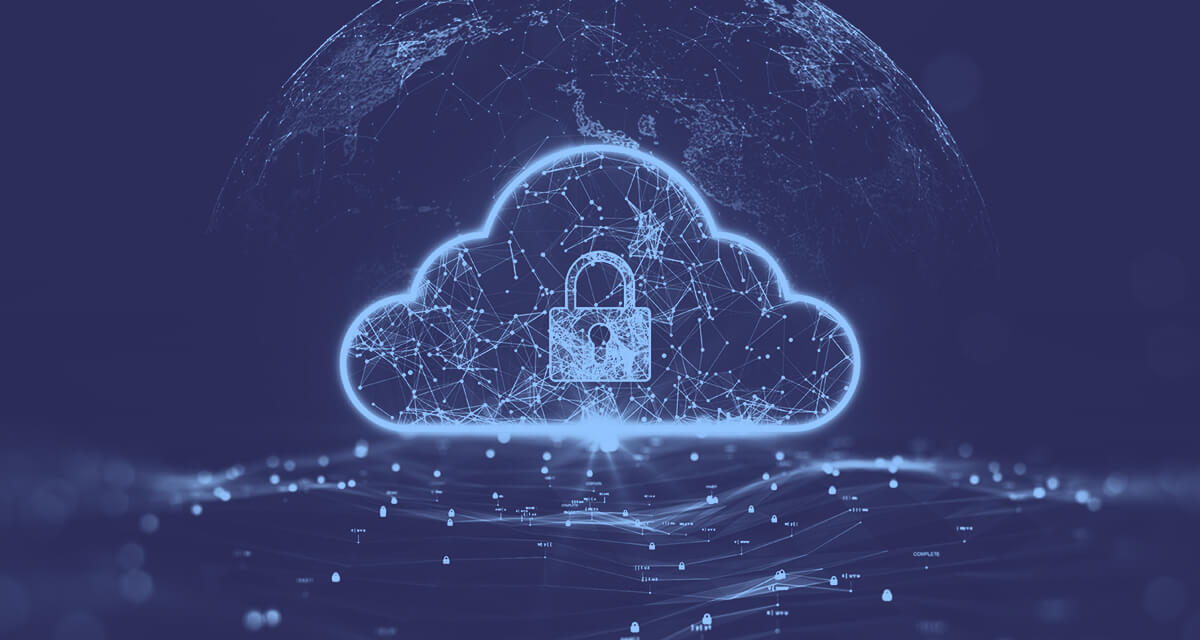

Endpoints are the most important components of a system to protect against viruses. They are where malicious software, worms, and viruses get into the system. So, for protecting a business or network, it is important to ensure that endpoints are secure. Here, the endpoint security solution steps in.
This article focuses on endpoint security, how it works to secure your organization, and why endpoint security is important for your enterprise network.
Endpoint security is the process of securing the entry points or endpoints of devices like computers, laptops, and mobiles in a network to stop them from being the door to malware. It protects the endpoints on a network or cloud to save them from cybersecurity threats. Endpoint security is the decedent of traditional antivirus software to detect and eliminate threats more efficiently.
The endpoint security solution is the cybersecurity front line for organizational network security. The volume of malicious attacks has grown to incontrollable masses. Endpoint systems can quickly detect, analyze and block potential threats and malicious attacks. They collaborate with other technologies to provide advanced detection speed and recovery.
In endpoint security solutions, devices like desktops, laptops, and mobile connected to a network are endpoints. The culture of bringing your own device is increasing in organizations due to the number of devices connected to networks.
User-end devices are not just laptops, desktops, and mobile devices. They include smart watches, digital assistants, and other IoT-enabled smart devices. We have sensors connected to everything, so the domain of endpoints is much wider than anyone thinks. So, endpoint security protects the organization’s network from the cyber threats that can come through these devices.
The best way to grow your business is to avoid data losses and information leaks to competitors. The endpoint security platform is an important part of the organizational security network. In today’s world, data is the company’s most sensitive asset, and to lose it to competitors or hackers means putting the entire company at risk. With the increase in the number of devices, the chances of endpoint breaches increase. Moreover, factors like remote work and bringing your own device make the network vulnerable to threats.
Hackers have many ways to steal sensitive information, and endpoints can be their hotspots to attack. Spending on security is as important as setting up other business assets. In case of breaches, millions are lost to recover. Endpoint security provides ultimate data protection by securing endpoints in modern businesses.
In a nutshell, Endpoint security refers to acting on endpoint devices, offering protection against malicious activities, and providing investigation and remediation capabilities required against dynamic security incidents.
The terms endpoint security, endpoint protection, and endpoint security solutions are interchangeably used in organizations for managing security issues and protecting the endpoints in a network. The endpoint solution is not a single-step solution. It is the integration of many steps that work together to examine files, process information, scan data for threats and remove threats.
Organizations must install an Endpoint Protection Platform (EPP) on all the end-user devices connected to the network to prevent them from malicious actors. An EPP is combined with other detection mechanisms and protocols to detect and eliminate the malware before they get into the system to steal important data. Integrating with advanced endpoint security solutions offers better detection and response against file-based malware attacks and advanced threats.
Endpoint security solution provides a central management console for all organizations to connect their network. This allows security administrators to investigate, monitor, and respond to potential cyber threats. Endpoint security can work on the on-location, cloud, and hybrid approaches.
The on-location approach includes a locally hosted data center that acts as a centralized management console. It reaches out to the endpoints through an agent to provide security against malicious attacks. The on-location model seems beneficial but has several drawbacks, like creating security silos because security staff can only manage endpoints within their perimeters.
The Cloud model is better than the on-location model. It allows the administrators to monitor and manage the endpoints through a cloud-based management console. It connects to the devices remotely. The cloud security approach is preferred because it is advantageous to ensure the security behind traditional perimeters by removing silos and improving the cybersecurity staff’s reach to protect remote devices and data against cyber threats.
A hybrid approach to applying endpoint security is a combination of both on-location and cloud solutions. Since the Covid 19 pandemic, the usage of the hybrid approach has increased with an increase in remote working locations. Organizations have led to adapt the legacy architecture and cloud elements to feature cloud capabilities to protect data.
Endpoint protection protocols that use a cloud approach to hold a database carrying threat information free endpoints from the bloat indulged in storing the information. These databases are maintained and updated.
The cloud-based approach is preferred because it is more scalable and fast. Larger organizations may depend on the on-location approach for many regulatory reasons. However, for small businesses and enterprise networks cloud approach is the most suitable endpoint protection solution.
As described later, endpoint security is the process of protecting the data and malware associated with the individual devices connected to a network. Endpoint protection platforms work to examine the files in a network. Modern ones use the power of the cloud approach to hide the database carrying threat information to free the endpoints and maintain databases.
The console of the related approach is installed on the network’s server or gateway, allowing the cyber security professionals to control the security of each device. They set the endpoints, and once they are set, the client software pushes updates to the endpoints and authenticates login attempts from the devices.
The administrators use corporate policies from one location. The endpoint protection platform accesses the endpoints through applications and blocks the unsafe or unauthorized ones. Moreover, encryption prevents data losses.
Once an EPP is set up, it becomes unable to detect malware and other threats quickly. Some solutions include an Endpoint Detection Response (EDR) integrated with the Endpoint protection platform. This combination enables the detection of more advanced security threats like file-less malware, polymorphic attacks, and zero-day attacks. Enhancing monitoring with EDR makes it possible to make visibility and response better and offer comprehensive protection.
The key components of endpoint security solutions for implementing endpoint security include:
There are numerous benefits of endpoint security solutions, including:
Endpoint security solutions have eliminated the need for traditional antiviruses that worked by deploying siloed point solutions. They have made communication between the devices easier and eliminated the gaps in the security systems that legacy solutions used to leave. Endpoint solutions can work anywhere, no matter what location or device type. They are managed from a single console, so it’s easier to locate addresses.
Endpoint security offers visibility to all endpoints, so you don’t have to deploy extra staff for security management. The manual management, auditing, provisioning, registering, updating, and retiring are eliminated. Fewer resources are needed, and you can look after your business more efficiently this way.
In traditional security systems, threat detection and location was a time taking task. Breaches take longer to identify, but endpoint security makes it easier to identify the data infected and employs data protection and security to recover lost data. Operations are much faster in this system, and only a few steps are required to eliminate the affected data or device from the network.
Each year organizations put millions to keep their systems secured and out of each of competitors. Many security officials are hired to ensure the system and network are secured. However, with endpoint security solutions, you can save a lot because the management, auditing, and provisioning are done digitally.
Though Endpoint security offers full control of devices connected to a network, they have some shortcomings too.
Endpoint solutions increase the surface area of the breaches by including all the devices connected to a single network in an organization. This leaves the surface susceptible to attack. However, it can be overcome by combining other security technologies with endpoint security software. This enhances the visibility, detection, and protection of devices and data.
Endpoint security is exclusively designed to protect endpoint devices, but it is not enough. More than 70% of data breaches in an organization occur due to endpoint devices. The endpoint security software requires integration to manage all of them simultaneously. So, other tools are added to it to cover all security issues.
Though the endpoint security approach and traditional antivirus software offer protection against malware, they differ in a few ways.
Antivirus programs offer protection within a single endpoint or individual devices like desktops, laptops, and mobiles. They deploy visibility, detection, and response solutions in only one endpoint device. However, endpoint security software provides security for an entire organization and offers visibility, detection, and response to a single location for advanced threat detection and protection of sensitive corporate data.
The traditional antivirus solution relies on the manual update of databases, or their update happens at a preset time. In Endpoint protection solutions, interconnected security is offered that moves responsibilities for system administrators in the enterprise.
Signature-based detection of threats happened in Traditional Antivirus solutions, which means you are at risk if you haven’t updated the software. However, endpoint network security solution allows real-time protection by automatically updating and offering continuous and comprehensive visibility. It offers application control to secure devices that can access the enterprise network. Also, endpoint systems continuously monitor corporate endpoints to keep corporate networks safe.
Endpoint security solution involves securing the end-user devices connected to a system that can act as potential carriers of malware. They are employed in organizations to meet enterprise security needs. When integrated with other security technologies, endpoint security software can provide enhanced visibility, detection, and removal of threats that can lead to data losses.
